Exploring the Contrast of Old and Modern Dubai
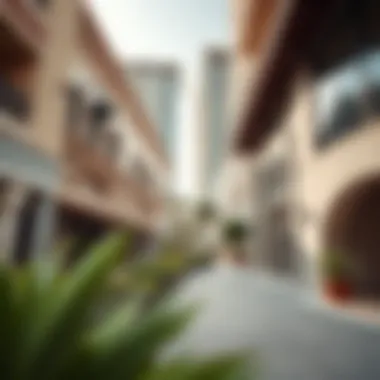
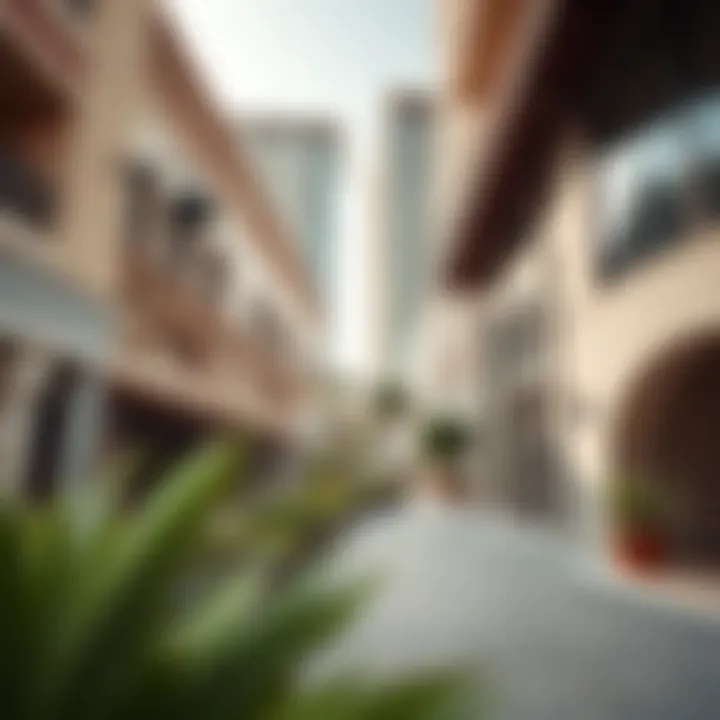
Intro
Dubai, a city that has transformed from a modest fishing hub into a symbol of opulence and innovation, exhibits an extraordinary dichotomy between its ancient roots and contemporary marvels. The bustling souks of Deira, with their aromatic spices and vibrant textiles, stand in stark contrast to the gleaming skyscrapers of Downtown Dubai, where luxury knows no bounds. This juxtaposition is not merely aesthetic; it reflects the city’s rich historical tapestry and rapid evolution that have shaped its current identity.
As we explore the intricate layers of Dubai, this article will provide a comprehensive understanding of not just its historical evolution, but also how this tranquil past influences the present-day landscape of luxury real estate developments, cultural shifts, and burgeoning investments. With a keen eye on the economic indicators, we will delve into property market trends, identify emerging areas ripe for investment, and offer expert insights tailored for savvy investors navigating this unique terrain.
Dubai represents more than just a destination; it is a canvas where tradition and modernity exist side by side—a narrative waiting to be unfolded.
Prolusion to Dubai's Transformation
Dubai, once a mere fishing village along the coast of the Arabian Gulf, has undergone a remarkable transformation over the decades. Today, it stands as a shining beacon of modernity, attracting attention from all corners of the globe. The importance of understanding this evolution cannot be overstated, particularly for those venturing into real estate in the region. Exploring the layers of Dubai's development gives insight into both its past and future, an essential aspect for investors, buyers, and renters.
Historical Context
The roots of Dubai trace back to the 18th century, a time when the city was a modest settlement inhabited primarily by Bedouins. Key trades like fishing and pearl diving defined its economy, shaping a lifestyle that revolved around the sea. Prior to oil discovery in the 1960s, the local economy relied heavily on these traditional sectors. The discovery of oil was nothing short of a game-changer, propelling Dubai into an era of rapid growth and significant change.
Governing strategies introduced by Sheikh Rashid bin Saeed Al Maktoum focused on infrastructure development, enabling a swift transition from its humble origins to a thriving trading hub. The city transformed its landscape with roads, schools, and hospitals, laying the groundwork for the Dubai we see today. Understanding this historical context is vital for those in the real estate market, as it highlights the evolution of urban planning and architectural style, influencing current investment trends.
First Impressions of Dubai
For visitors arriving in Dubai, the skyline itself becomes a metaphor for this transformation. The towering Burj Khalifa, the tallest building in the world, dominates the skyline and signifies not just architectural prowess, but a collective ambition that defies expectations. However, it is in the juxtaposition of modern skyscrapers with traditionally styled neighborhoods that one can truly appreciate the essence of Dubai.
Strolling through the Al Fahidi Historical Neighborhood, one can see wind-tower architecture and narrow lanes that offer a glimpse into the past. This area feels like a different world compared to the glitz of Downtown Dubai, reminding us of the cultural heritage that coexists with modernity.
When investors consider the real estate opportunities, the blend of old and new directly influences property value and demand. Buyers must note that the charm of historical areas remains appealing, attracting those looking for a sense of heritage, while the modern districts cater to a different clientele focused on luxury and convenience.
In summary, the transformation of Dubai is a tale worth telling. It speaks to the spirit of innovation and resilience, factors that play significant roles in the aspirations of potential investors and residents alike in navigating this unique real estate landscape.
Old Dubai: A Glimpse into the Past
Old Dubai serves as a remarkable window into the heritage and history of the emirate, giving visitors and residents alike a taste of what life was like before the skyscrapers and luxury shopping became central to the city’s identity. As we explore this hidden gem, it becomes evident that Old Dubai is not merely a relic of the past, but a vibrant community that continues to impact the cultural fabric and economic landscape of the modern city. The streets, stories, and sites of Old Dubai provide context and therefore relevance to the ongoing discourse about development and preservation in the rapidly changing urban environment.
Cultural Heritage and Traditions
The beauty of Old Dubai lies in its rich tapestry of cultural heritage and traditions. The customs, from traditional dances to culinary practices, are vital threads in the city’s narrative. Old Dubai has nurtured various cultural influences over the years, creating a unique blend that resonates with its inhabitants and visitors alike. Cultural events, festivals, and arts showcases in this area allow for an authentic experience of Emirati culture. These traditions are not just history lessons; they reflect the evolving identity of a city at the crossroads of modernity and nostalgia.
Among the aspects worth highlighting:
- The warmth of hospitality: Many local homes still practice the age-old tradition of welcoming guests with Arabic coffee and dates, creating a sense of community.
- Traditional crafts: From weaving to pottery, many artisans keep these practices alive, ensuring that the skills and knowledge are passed down through generations.
Iconic Landmarks of Old Dubai
Iconic landmarks hold stories of the past, linking today’s Dubai with its storied origins. Each landmark not only offers historical context but also serves as a reminder of the emirate's transformation. Understanding these sites is crucial for comprehending the broader narrative of Dubai.
Al Fahidi Historical Neighborhood
Al Fahidi Historical Neighborhood stands out as a preserved record of Dubai's past lifeways. With its narrow lanes and wind-tower architecture, it invites one to walk alongside shadows of history.
- Key characteristic: The labyrinthine streets embody the authentic old-world charm of Dubai, a stark contrast to the structured layout of modern districts.
- Uniqueness: Al Fahidi showcases the traditional way of life, making it a popular site for those who want a genuine feel of Dubai's cultural roots. However, there’s a delicate balance between maintaining its traditional essence and accommodating the increasing influx of tourists.
Dubai Creek
Dubai Creek is the lifeblood of the city, representing a meeting point for trade and culture throughout the ages. This tidal inlet has witnessed Dubai's rise from a humble pearling town to a global hub.
- Key characteristic: The Creek is lined with dhows, traditional wooden boats that symbolize the maritime heritage of the city.
- Uniqueness: Visitors can experience the old-fashioned abra rides, which offer a unique vantage point of the city’s rapid development from the water. Still, the area is facing pressures from modernization and urban development, posing challenges to its traditional charm.
Gold and Spice Souks
The Gold and Spice Souks are vibrant, bustling markets where the old world and the new merge seamlessly. These landmarks highlight Dubai as a historical trading hub, rich in resources and culture.
- Key characteristic: The sultry scent of spices and the shimmer of gold create a sensory overload, showcasing the city's eclectic trade history.
- Uniqueness: They serve as both a cultural experience and a shopping haven for millions, yet the accessibility and rising prices could deter local artisans and vendors in the long run.
In sum, the exploration of Old Dubai reveals more than just brick and mortar; it unveils a story of resilience, identity, and adaptation. The landmarks, traditions, and heritage sites act as pillars, supporting the weight of Dubai’s rapid growth while bearing witness to the saog of progress that continues to shape the city.
The Emergence of New Dubai
The evolution from a modest fishing community to an international hub of commerce and luxury is nothing short of remarkable. New Dubai represents this transformation, encapsulating architectural feats, economic vigor, and a modern lifestyle that constantly attracts attention. This section elaborates on the significance of New Dubai, weaving through the architectural innovations and economic growth that define this contemporary landscape.
Architectural Innovations
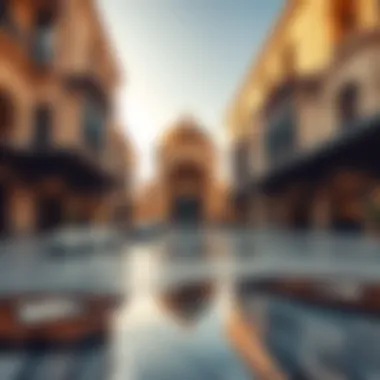
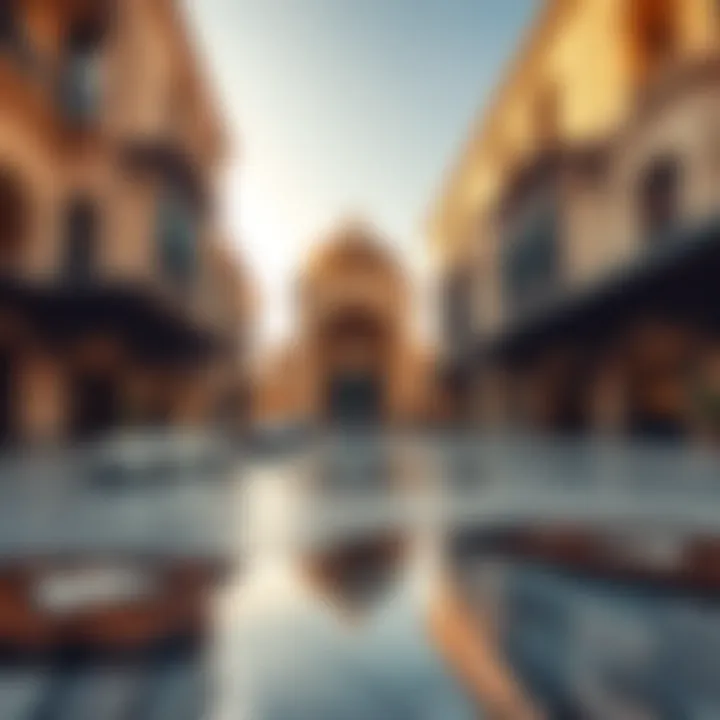
The skyline of New Dubai is a testament to human ingenuity and ambition, showcasing designs that break boundaries and challenge conventions. From towers that seem to touch the clouds to islands in the shape of palm trees, the architectural innovations are not only visually arresting but also pivotal in shaping Dubai’s international image.
Burj Khalifa
Burj Khalifa stands as the tallest building in the world, a shining emblem of what can be achieved through determination and vision. With its staggering height of 828 meters, this masterpiece is a powerful symbol of Dubai's aspirations. What sets Burj Khalifa apart is not only its height but also the intricate design that mirrors traditional Islamic architecture with a modern twist. Its observation decks offer breathtaking views, making it a popular attraction for tourists and locals alike.
Unique Features: The building boasts a remarkable triple-lobed footprint and a series of setbacks that create a stunning visual effect while maximizing space. Its sheer presence overrides the horizon, compelling attention both locally and from afar. However, with great elevation comes the challenge of maintenance and practical concerns related to its height, which can be seen as drawbacks in the context of daily operations.
The Palm Jumeirah
Another striking feature of New Dubai is The Palm Jumeirah, a man-made island that embodies luxury living and ostentation. Shaped like a palm tree, this architectural wonder is home to upscale hotels, villas, and entertainment options. Beyond its stunning aesthetics, The Palm has redefined real estate opportunities in Dubai. Key Characteristics: What puts The Palm on the map is its versatility; it offers urban living while being close to the water, catering to both locals and expatriates.
Unique Features: The experienced investor might note that despite its popularity, property prices on The Palm can be exorbitant. Its exclusivity does come at a steep cost, making it an appealing yet expensive option for buyers looking for luxury and status.
Contemporary Skyline
As the skyline continues to evolve, Contemporary Skyline serves as an anthology of advancements in modern architecture. Each building tells a story of innovation, from the twisting facades of the Cactus Tower to the dynamic designs of the Dubai Frame. These structures symbolize the blend of function and aesthetics, serving both as workplaces and visual focal points in the bustling city.
Key Characteristics: What makes the contemporary skyline significant is its embodiment of the city's commitment to pushing the envelope. New technologies and sustainable practices are now at the forefront, demonstrating that Dubai is not just about grandeur but also about responsible development.
Unique Features: However, some may argue that in the quest for height and design, the essence of the local culture sometimes gets overshadowed. This creates a lingering concern among residents who cherish the heritage of Old Dubai.
Economic Growth and Investment
The expansion of New Dubai is not solely about architectural splendor; it’s also fueled by a booming economy. This growth has been driven by various factors, including a continuous influx of foreign investment, a thriving tourism sector, and a diverse array of business opportunities. Understanding these economic dynamics is vital for potential investors.
Economic growth in New Dubai presents opportunities for real estate investors, creating a marketplace where innovation meets tradition.
The emphasis on foreign investment has made Dubai an appealing destination for business, attracting companies from around the globe to set up regional headquarters. The favorable tax environment and an impressive transport infrastructure further empower this economic structure.
Investment Opportunities: Investors are continually drawn to the real estate sector, with new developments catering to various demographics ranging from luxury buyers to budget-conscious renters. The prospect of high rental yields, especially in areas close to landmarks like Burj Khalifa or The Palm Jumeirah, adds to the allure.
Neighborhoods: Contrasting Experiences
The neighborhoods of Dubai exemplify the distinctive blend of its rich heritage and modern advancements. Each area offers a unique flavor that reflects the city's diverse identity. By understanding how old and new neighborhoods coexist, one can truly appreciate the city's evolution and grasp the real estate opportunities it presents.
Cultural Districts vs. Commercial Hubs
Art Dubai
Art Dubai presents a fascinating intersection of culture and commerce, allowing visitors to experience the artistic heartbeat of this rapidly growing city. This art fair showcases works from established artists alongside emerging talents, making it a hub for creative expression. The key characteristic of Art Dubai is its inclusive nature, open to both local artists and international talents.
This venue is popular among art lovers, collectors and even casual visitors. It also plays a significant role by highlighting Dubai's commitment to becoming a global cultural center. One unique feature of Art Dubai is the way it connects commercial interests with cultural appreciation. However, with this commercial aspect, some argue that the true essence of art might be overshadowed by market values. Thus, while it draws attention and fosters a sense of community, the balance between profitability and genuine artistic expression remains a topic of discussion.
Downtown Dubai
When one thinks of modern Dubai, Downtown Dubai often comes to mind. The area is known for the Grand Burj Khalifa, which shoots up like a spear into the sky. This part of town encapsulates the ultra-modern spirit of today, with a stunning skyline that can leave anyone breathless. This key characteristic also makes it a hotspot for tourists and residents alike.
Downtown Dubai is well-planned, providing easy access to shopping, dining, and entertainment options, all within walking distance. However, this attraction comes with a price; living expenses in this key area can be steep. Despite its high cost of living, the unique feature of Downtown is its vibrant life that never seems to slow down. The demand for luxury accommodations continues to soar here, making it both a lucrative investment opportunity and a challenging place for some to settle in.
Business Bay
Business Bay is where Dubai's financial ambitions take form. The area features high-end office spaces and residential buildings, creating a commercial hub that attracts professionals from around the world. Its key characteristic is the blend of work and leisure, allowing one to enjoy both a brisk workday and a relaxing evening along the waterfront.
The proximity to the central business district offers unparalleled benefits for career-minded individuals, making it a popular choice for those looking to maximize their daily efficiency. What sets Business Bay apart is the high quality of life it provides for residents who work in the area. However, with rapid development, the competition for property can be fierce, driving prices higher. That being said, investing in this neighborhood also proposes potential for substantial returns in the long run.
Residential Areas: Options for Different Lifestyles
Old Dubai Residences
Living in Old Dubai is like stepping into a time machine. The houses and buildings are steeped in tradition and showcase the rich tapestry of Dubai’s past. A key characteristic of residences in this area is their earthen architecture, often with wooden accents and intricate designs that tell the story of the city's roots. These neighborhoods tend to attract those who cherish cultural vibes and community engagement.
With lower costs compared to the shiny modern high-rises, Old Dubai offers an advantage for families wanting an authentic, simple lifestyle. However, the challenge might be the lack of modern amenities that some are used to diverting from their daily comfort. Investing here holds charm and potential as investors appreciate unique character in their properties.
Modern High-Rises
On the flip side, the modern high-rises reflect Dubai's ambitious aspirations. These skyscrapers symbolize luxury, elegance, and a cosmopolitan lifestyle. Their key characteristic includes state-of-the-art facilities, amenities like swimming pools and gyms, and sweeping views of the horizon.
These buildings cater to a more affluent clientele looking for a premium living experience. While residents enjoy proximity to high-end shopping and entertainment, one must consider that sometimes these luxury complexes can become mere facades. The sense of community might sometimes feel superficial, as most residents rush through their lives. Yet, the investment prospects are promising, given the enduring demand for upscale accommodations.
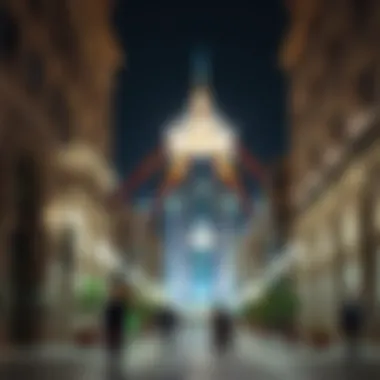
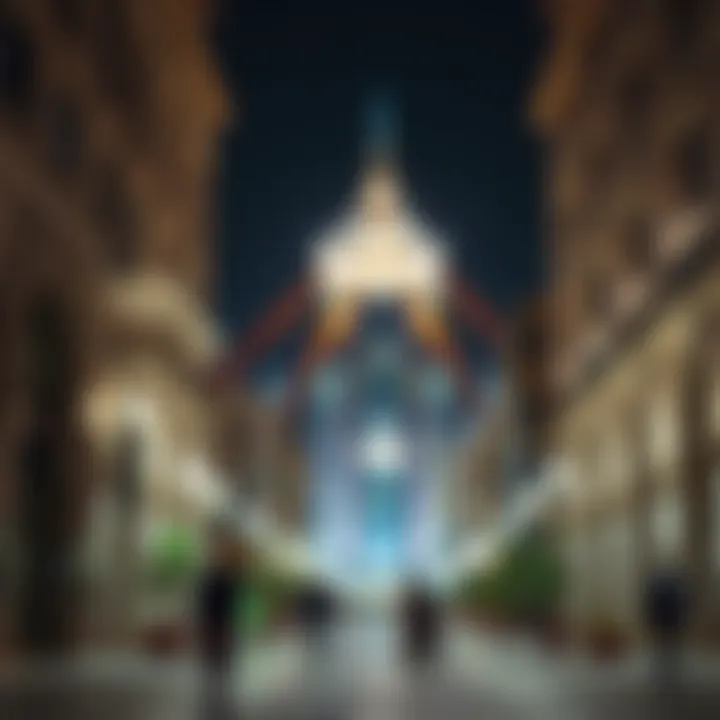
Villa Communities
Villa communities provide a blend of luxury and comfort, typically designed for families seeking space and privacy. One notable aspect is the room to breathe—villages are often surrounded by greenery, a stark contrast to the high-rise jungles of modernity. Key characteristics include spacious layouts, private gardens, and a family-friendly environment.
These communities foster a strong sense of belonging and promote an enjoyable lifestyle. For families, villas represent a safe haven that combines comfort with modern amenities. However, maintenance and service fees can quickly add up, making it a significant investment. The appeal of villa communities continues to grow, particularly among expatriates seeking a balance between community living and luxury.
Socio-Economic Factors Influencing Real Estate
The landscape of Dubai's real estate is not just painted by its towering skyscrapers or the delightful twists of narrow alleys in Old Dubai. It's a complex tapestry woven together by socio-economic factors that shape and influence the property market at every turn. These elements play a pivotal role in driving demand, informing investment strategies, and helping potential buyers and renters navigate the often turbulent waters of this vibrant market.
Demographic Shifts and Migration
A powerful undercurrent in Dubai’s property sector is the ongoing demographic shift linked to migration patterns. Over the past few decades, the city has evolved into a melting pot of cultures, welcoming individuals from more than 200 nationalities. This influx significantly alters the real estate landscape, as it creates a diverse demand for varying types of housing.
As people from different backgrounds flock to Dubai, they often seek accommodations that reflect their unique cultural identities and lifestyle preferences. For instance:
- Family Units: Many expatriates lean towards larger apartments or villas in communities such as Jumeirah or Arabian Ranches, which cater to family life.
- Young Professionals: In contrast, younger individuals or couples often gravitate towards trendy high-rise apartments in areas like Business Bay or Dubai Marina, which offer proximity to work and leisure activities.
The migrant workforce, particularly from countries like India, Pakistan, and the Philippines, further emphasizes the need for affordable housing, leading developers to focus on projects that strike a balance between luxury and cost-effectiveness. This results in rental prices reflecting supply and demand dynamics influenced by these demographic changes.
The Role of Tourism in Real Estate Growth
Tourism is another cornerstone that fortifies the real estate market in Dubai. The city is not merely a commercial hub but also a magnet for travelers seeking luxury experiences, cultural exchanges, and business opportunities. According to Dubai Statistics Center, millions visit Dubai each year, contributing to both short-term and long-term rental demands.
The prominence of tourism in shaping the real estate sector can be illustrated through several key aspects:
- Short-term Rentals: Platforms like Airbnb and Booking.com have surged in popularity as tourists favor staying in local accommodations over standard hotels. This trend boosts rental income potential for property owners and investors.
- Luxury Real Estate Boom: The influx of wealthy tourists brings an appetite for extravagant properties. High-end developments, particularly in Palm Jumeirah and Downtown Dubai, see constant attention, further driving up real estate investments in these areas.
"The dovetailing of tourism and real estate doesn't just create opportunities; it reshapes communities, highlighting the symbiosis between culture and commerce."
The thriving tourism sector also fuels infrastructure developments, such as the expansion of Dubai's airports and public transport systems, making the city even more accessible. This not only enhances the living experience but simultaneously heightens real estate values across the board.
As one examines the socio-economic factors that swirl around Dubai’s real estate, it becomes clear that these elements are central to understanding the market’s unique dynamics. Savvy investors and homebuyers should keep a close eye on demographic trends and tourism statistics, as they often serve as indicators for future investment decisions.
Investment Opportunities in Dual Realities
Investment in Dubai has become a hot topic, with many drawn to the remarkable blend of old-world charm and sleek modernity that defines this vibrant city. As potential investors, buyers, and renters explore Dubai's real estate landscape, it's crucial to understand the differing opportunities presented by both the historical districts and the modern developments. Each area offers unique advantages, and being aware of these can aid in making informed decisions.
Attractions of Investing in Old Dubai
Investing in Old Dubai presents a distinctive opportunity. Here, connections to rich cultural heritage are abundant, appealing to those interested in authentic experiences. Properties in areas like Al Fahidi and the Dubai Creek area maintain their historical architecture, attracting those who appreciate traditional aesthetics. The following points highlight key attractions:
- Cultural Immersion: Buyers can immerse themselves in Dubai's roots. The rich stories told through the design and layout of Old Dubai neighborhoods draw those who value authenticity.
- Potential for Appreciation: As modernization sweeps across the city, there’s a growing demand for renovated properties in these areas. Investors may see substantial returns as the local government focuses on conservation and tourism.
- Tourist Appeal: Old Dubai is a favored spot for tourists. Investing here may yield solid rental income, especially for properties catering to seasonal visitors wishing to experience the traditional side of the emirate.
- Community Feel: Unlike the fast pace of modern developments, Old Dubai maintains a more community-oriented atmosphere, which can be appealing for families and retirees.
Whether one is attracted to the historical factors or the potential financial benefits, Old Dubai offers various avenues for exploration.
The Allure of Modern Developments
On the flip side, modern developments in Dubai are characterized by luxurious amenities, high-tech features, and contemporary architecture. This side has its own appealing facets for investors, leading to impressive returns:
- High ROI Potential: Areas such as Downtown Dubai and Dubai Marina offer properties at premium prices. Given the ongoing demand and influx of expatriates, renting or reselling can provide attractive returns on investment.
- Innovative Living Spaces: Many new developments prioritize sustainability and innovation in design. This modern living experience resonates well with the contemporary lifestyle that many buyers seek.
- Amenities and Luxury: Modern properties often come with lavish amenities like pools, gyms, and smart home technology. This attracts high-income individuals looking for convenience and an upscale lifestyle.
- Proximity to Business Hubs: Investing in modern commercial properties places investors within thriving business districts, increasing opportunities for capital growth and stable rental income.
In summary, both old and new Dubai present distinct investment opportunities. Decisions should be guided by personal goals, risk tolerance, and market conditions, optimizing one’s position within this unique dual reality of Dubai.
"Dubai is a canvas—a blend of rich history and innovative design, offering investments that cater to every taste and preference."
For more insights and information, resources like Britannica provide comprehensive background on the city's evolution. Those seeking current market conditions and investor advantages can explore discussions on Reddit.
Whether diving into the cultural heart of Old Dubai or embracing the modern skyline, investors are sure to find hidden gems in this evolving urban landscape.
Cultural Interactions in a Growing City
The dynamics of modern cities like Dubai epitomize the melding of history with contemporary life. In the heart of this vibrant metropolis, the interactions between old and new cultural elements create a unique tapestry woven from diverse traditions, influences, and aspirations. This cultural interplay not only enriches the social fabric but also encourages tourists and residents alike to explore various facets of Dubai’s identity.
One significant aspect of cultural interactions in Dubai is the coexistence of traditional values with the fast-paced, cosmopolitan lifestyle that modernity brings. Many expatriates call Dubai home, blending their customs and practices with those of the Emirati locals. This fusion is visible in everyday life—from the restaurants offering a plethora of international cuisines to traditional Emirati eateries. The sum of these experiences fosters an environment where learning about different cultures occurs naturally and organically, making cultural interactions an integral part of life in Dubai.
The Fusion of Old and New Traditions
As one walks through the winding streets of Old Dubai, it's possible to perceive the echoes of a bygone era. Visiting Al Fahidi Historical Neighborhood presents an opportunity to appreciate the simple yet elegant architecture reminiscent of Dubai's heritage. Contrast this with the dazzling displays of modern designs like those found in The Dubai Mall, and it becomes apparent that the juxtaposition of these styles enhances appreciation for both eras.
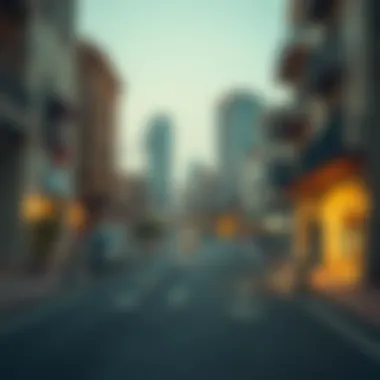
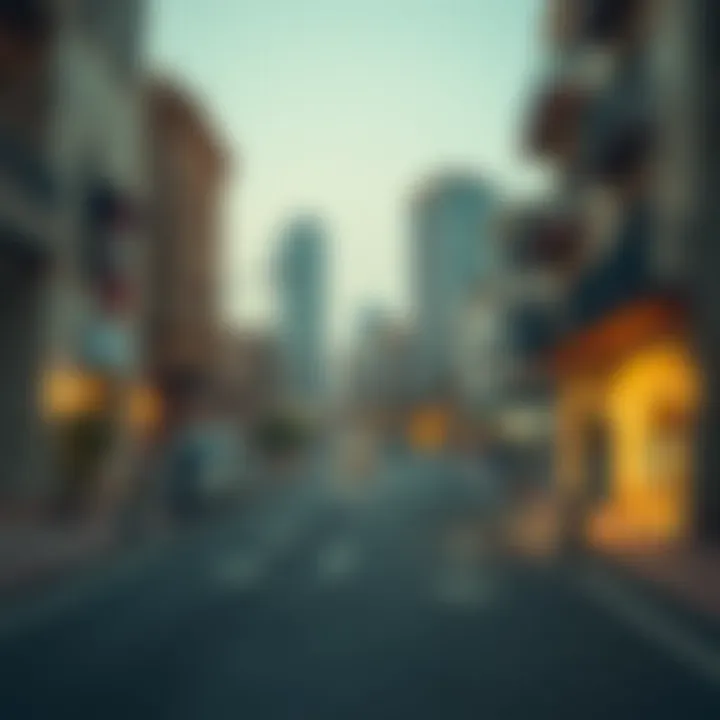
Amidst this juxtaposition, traditional practices are either preserved or reinterpreted, often integrating with modern interpretations. For instance, traditional Emirati music and dance can be experienced during festivals and events that invite people from different backgrounds to celebrate together. This blending doesn’t just serve as entertainment; it cultivates a sense of respect and understanding among the diverse citizens residing in the city.
Events that Celebrate Heritage
Dubai is home to a variety of festivals and events that honor its rich cultural heritage while welcoming modern influences. Events such as the Dubai Shopping Festival and the Dubai Food Festival create a vibrant atmosphere where traditional crafts and contemporary products vie for attention.
Highlighting Dubai's cultural diversity, the Emirates Festival of Literature draws authors, poets, and storytellers, facilitating a platform for dialogues between old and new narratives. Similarly, the International Film Festival showcases films that address themes bridging historical context with modern storytelling techniques.
"Cultural events in Dubai are not merely meant for entertainment; they are vital to nurturing connections among residents and visitors, enriching their understanding of each other’s backgrounds and appreciate life in the emirates."
Through these celebrations, Dubai remains committed to honoring its past while embracing the multicultural tapestry that fuels its growth. The events serve as reminders of the importance of cultural preservation in a rapidly changing landscape, ensuring future generations recognize the foundations upon which the vibrant city stands today.
Challenges of Balancing Development and Preservation
As Dubai continues to grow at a dizzying pace, the challenges of balancing development and preservation become more pressing. The city stands at a crossroads, where its rich heritage must coexist with the breathtaking innovations that define its modern skyline. The importance of examining these challenges cannot be understated, especially for potential real estate investors, buyers, and renters, as they navigate a marketplace shaped by this dichotomy.
Urban Planning Dilemmas
Dubai's rapid expansion comes with a host of urban planning dilemmas. The surge in population and a quest for economic growth push developers to prioritize high-rise constructions and commercial spaces, often at the expense of historical sites. The following points highlight critical aspects of these challenges:
- Zoning Regulations: The city's zoning laws struggle to keep pace with its growth. Often, areas rich in cultural significance are zoned for commercial use, leading to potential demolition of historical landmarks.
- Public Spaces vs. Commercial Development: The need for green spaces is overshadowed by the profound allure of profit from commercial enterprises. This can lead to a lack of recreational areas that cater to the community and tourists alike.
- Community Engagement: Successfully integrating community voices into the urban planning process remains a hurdle. Local communities often feel sidelined as developers execute plans without considering their input, risking the very essence of what makes Dubai unique.
Such dilemmas not only raise questions about heritage preservation but also about the identity of the city itself. Investors should carefully consider how these factors influence property values, especially in areas where old meets new.
Conservation Efforts for Historical Sites
Amidst the modern landscape, concerted conservation efforts are crucial for preserving Dubai’s historical sites. These initiatives foster a sense of continuity and respect for the city’s rich past. The efforts can be described through several key aspects:
- Funding and Resources: Securing funding for restoration projects is vital. Many historical sites require substantial investment to restore and maintain their integrity, which can deter potential investors focused solely on profit.
- Community Initiatives: Local organizations play a pivotal role in preservation. Grassroots movements often advocate for the protection of heritage sites, ensuring they remain a part of the cultural dialogue within the community.
- Government Policies: Regulations designed to protect historical sites are in place but need strong enforcement. Policymakers must balance economic aspirations with the necessity of preserving Dubai’s rich tapestry of history.
“Preservation of heritage is not just about saving structures. It's about keeping the spirit of a community alive.”
Future of Dubai: Integration of Past and Present
The future of Dubai holds immense promise. Here, a growing sense of nostalgia meets relentless innovation. The city's leaders and residents alike are not just looking to build another skyscraper; they aim to weave together the rich traditions of the past with the aspirations for tomorrow. This duality defines Dubai's evolving identity. In this realm, preserving the historical roots while embracing modernity is not merely a choice, but a necessity for sustainable growth and cultural richness.
To understand this better, we must explore two significant focal points: anticipated architectural trends and sustainability initiatives.
Anticipated Architectural Trends
As Dubai stretches toward the horizon with its ambitious projects, architecture will continue to play a pivotal role. It’s no longer just about height or luxury; it’s about creating spaces that resonate with the city’s heritage. Some anticipated trends include:
- Cultural Elements in Design: More contemporary structures will integrate designs inspired by traditional UAE architecture. Expect to see intricate mashrabiya screens, which reflect the sun while allowing for light and air circulation.
- Mixed-Use Developments: Modern life in Dubai thrives on convenience. Developers will increasingly favor mixed-use projects that combine residential, commercial, and recreational spaces into cohesive environments. This fosters community engagement while minimizing congestion and commuting stress.
- Vertical Gardens and Green Spaces: Amidst concrete jungles, there’s a rising demand for greenery. Skyscrapers featuring vertical gardens not only enhance aesthetic value but also contribute to air quality and biodiversity.
As such innovations take flight, they’ll offer a dynamic blend of the old and the new, marking a future where functionality and heritage coalesce seamlessly.
Sustainability Initiatives
Dubai’s future is also intertwined with a deep commitment to sustainable development. Facing torrid summers and resource scarcity, the city is actively pursuing initiatives aimed at environmental preservation and sustainable urban planning. Key initiatives include:
- Energy Efficiency Projects: Efforts to design buildings that use less energy are on the rise. This includes utilizing solar panels and other renewable resources to reduce dependence on fossil fuels.
- Water Conservation Techniques: Given the arid landscape, innovative water-saving techniques are vital. Upcoming developments are likely to incorporate systems for rainwater harvesting and greywater recycling, ensuring scarce resources are conserved.
- Smart City Innovations: Leveraging tech for sustainability is essential. The push for smart grids, efficient waste management, and advanced transportation systems means less environmental strain and enhanced quality of life for residents.
The integration of sustainable practices in response to both local and global environmental challenges will not only sustain Dubai’s growth but also strengthen the sense of community and pride among its residents.
"To respect the past is to understand the present, and to build a future that embraces both."
Ending: Reflecting on Dubai's Journey
The journey of Dubai stands as a vivid tableau of transformation, marked by dynamic changes in its landscape and culture. Offering a fascinating juxtaposition between its ancient roots and modern progress, Dubai's story is not just an urban metamorphosis but also a unique cultural narrative. The significance of this evolution becomes evident when considering several critical elements.
Lessons Learned from the Past
Dubai's past provides a rich tapestry of lessons that are relevant not only to its residents but also to potential investors and those interested in the real estate market. The city started as a humble fishing village and blossomed due to strategic vision and careful planning. Key to this growth has been the preservation of its heritage while embracing modernity. The local leadership recognized early on the importance of balancing development with cultural identity.
Several takeaways from this journey include:
- The Role of Heritage: Understanding that cultural roots can coexist with new developments. Historical sites and traditional neighborhoods have seen revivals that attract both tourists and investors alike.
- Flexibility in Urban Planning: Adaptability has been crucial; the city evolves with time, adjusting to new technologies and changing demographics. This flexibility encourages sustainable practices that benefit the economy while maintaining the soul of the city.
- Diversity and Inclusivity: Dubai's demographic makeup is diverse, with expatriates playing a crucial role in the economic landscape. This diversity enriches community interactions and creates a vibrant marketplace.
Looking Ahead
As Dubai continues to evolve, the future holds numerous exciting prospects. Anticipated architectural trends signal an ongoing commitment to innovation, with designs that prioritize environmental sustainability and functionality. Future projects may incorporate smart technologies to enhance living conditions while minimizing ecological footprints.
Investors, buyers, and renters should factor in the following considerations when looking forward to the developments in Dubai:
- Sustainability Practices: There’s a clear trend toward green buildings and energy-efficient structures, responding to global climate challenges. The city's initiatives promote an eco-friendly approach to urban design, setting a precedent that other cities may aspire to emulate.
- Competitive Real Estate Market: New developments are expected to meet diverse lifestyles and needs, catering to a growing population. This presents opportunities for investments in high-rise buildings, eco-communities, and traditional areas that deserve revitalization.
- Cultural Festivals and Events: Future plans include more events that celebrate heritage while promoting contemporary art and culture, fostering a harmonious blend of the old and new.
As Dubai charts its course forward, the blend of its historical essence with modern aspirations will continue to captivate the world. The ongoing dialogue between the city’s past and future ensures that both residents and international investors remain engaged in its thriving landscape.







